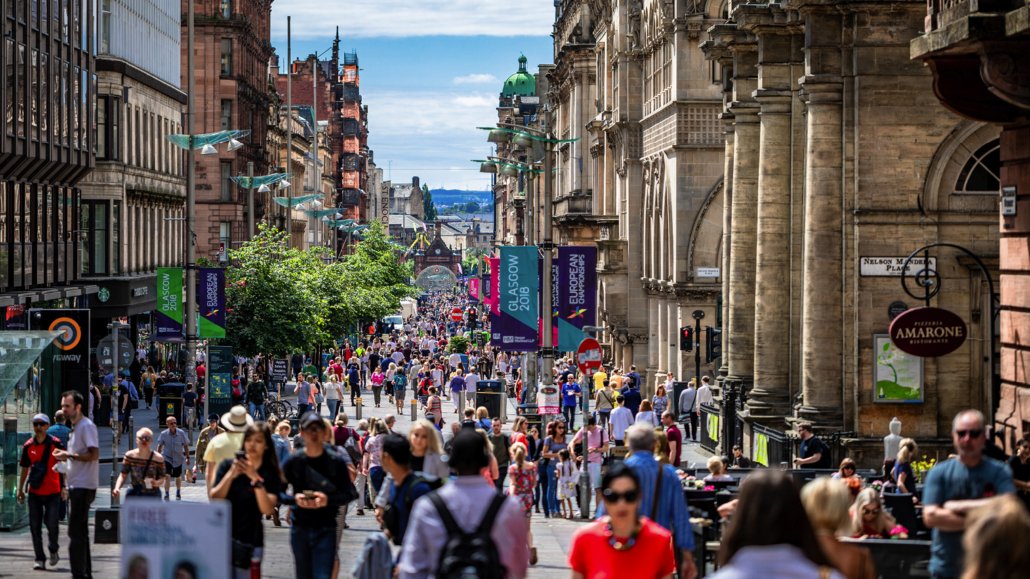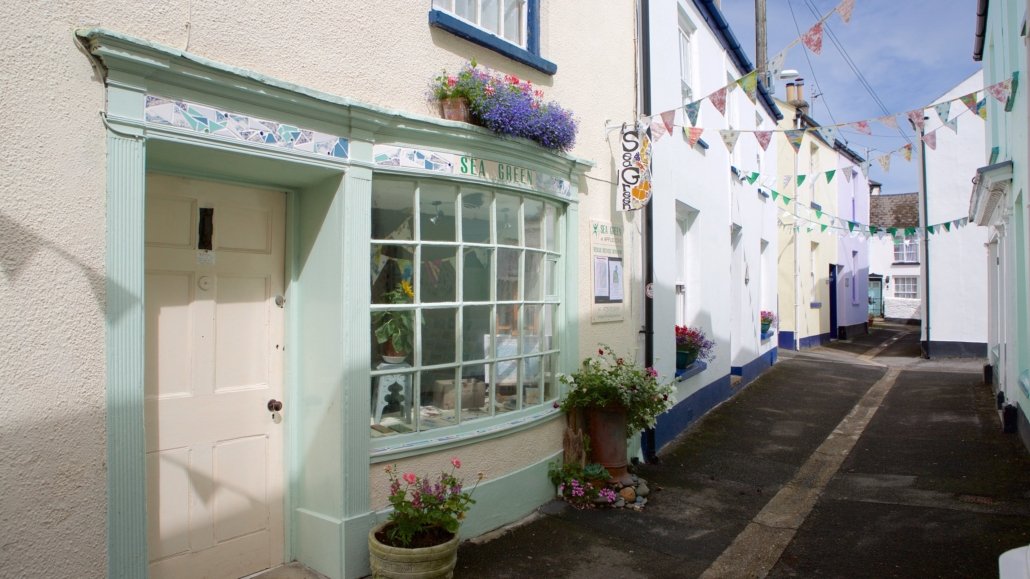Glasgow, the largest city in Scotland, has a rich history and a vibrant cultural scene. Whether you’re into history, a food person, or a shopaholic, Glasgow has something for everyone.
In this guide, I’ll explore some of the must-see attractions, the best places to shop and eat, and a few little gems that you won’t want to miss.
Glasgow’s Historic Attractions
Glasgow Cathedral
Glasgow Cathedral, also known as St. Mungo’s Cathedral, is a stunning medieval church built in the 1100s.
This is the only medieval cathedral on the Scottish mainland to have survived the Reformation intact, making it a must-visit location for history enthusiasts. The intricate Gothic architecture and beautiful stained glass windows will leave you in awe.
Take a guided tour to learn more about the Cathedral’s rich history, or simply wander the grounds and soak in the atmosphere.
Also don’t forget to visit the nearby St. Mungo Museum of Religious Life and Art, which showcases artwork and artefacts from various world religions.
Castles Near Glasgow
While Glasgow doesn’t have any castles within the city itself, there are several impressive castles within a short drive, making for a perfect day trip. Some of the most noteworthy castles include:
Bothwell Castle
Located about 10 miles southeast of Glasgow, Bothwell Castle is a stunning 13th-century fortress overlooking the River Clyde. The castle has endured many sieges over the centuries and now stands as Scotland’s largest and finest example of medieval architecture. Wander through the ruins, discover the stories behind its history, and take in the beautiful riverside views.
Dumbarton Castle
Just a 30-minute drive from Glasgow, Dumbarton Castle has a rich history dating back more than 1,500 years.
Perched atop a volcanic rock overlooking the River Clyde, this ancient fortress offers incredible panoramic views of the surrounding landscape. Don’t miss the guided tour where you’ll learn about the castle’s fascinating history and its role in defending Scotland from Viking invasions.
Craignethan Castle
For a truly off-the-beaten-path castle experience, head to Craignethan Castle, located around 25 miles southeast of Glasgow.
This atmospheric and lesser-known ruin was once a grand stronghold in the 16th century. Explore the remains of the great hall and kitchens, marvel at the innovative artillery fortification, and take in stunning views over the river valley below.
Shopping in Glasgow

Buchanan Street
Buchanan Street is Glasgow’s shopping paradise, offering an impressive range of high-end boutiques, popular high-street stores, and unique speciality shops.
From designer labels to trusted brands like H&M or Zara, there’s something for every shopper on this bustling pedestrianized street. For more upscale shopping options, don’t miss Princes Square – a chic indoor shopping centre with designer boutiques and restaurants.
Merchant City
Located in Glasgow’s cultural heart, Merchant City is a hip district filled with art galleries, design studios, and fashionable shops.
Wander along its picturesque streets and discover boutique shops, vintage stores, and independent retailers. If you’re into antiques or collectables, be sure to stop by the Barras – a historic marketplace where you can find just about anything.
West End
Glasgow’s eclectic West End is home to an array of independent retailers offering everything from clothing to homewares. For fashion lovers, the iconic Byres Road offers a mix of high-street and boutique shops, while the charming lanes around Ashton Lane are perfect for discovering unique finds.
The West End is also home to renowned vintage shops, like Starry Starry Night and Glorious, where you can hunt for one-of-a-kind pieces.
Glasgow’s Food Scene
Glasgow has a diverse food scene that caters to every taste and budget. Below are some of our recommendations for must-try local dishes and where to find them.
Indian Cuisine
Glasgow is renowned for its love of Indian food, with several excellent Indian restaurants dotted around the city.
Head to Mother India’s Café in the West End or City Centre for delicious tapas-style dishes, or try Shish Mahal on Park Road for some award-winning curry.
Scottish Cuisine
No visit to Glasgow would be complete without trying some traditional Scottish dishes. Ubiquitous Chip in the West End offers a delightful range of modern Scottish cuisine with locally sourced ingredients, while Two Fat Ladies at The Buttery is perfect for seafood lovers.
Street Food & Markets
If you’re seeking more casual dining options, you’ll find a thriving street food scene in Glasgow.
Check out Taste Buchanan at Buchanan Galleries for delicious street food options including burgers, waffles, and Vietnamese cuisine. Don’t miss the Finnieston Farmers’ Market held monthly or the popular weekend Merchant City Market – both great spots for artisan foods and local produce.
Hidden Gems & Lesser-Known Attractions
While Glasgow Cathedral and the shopping districts are must-visits, Glasgow also boasts a number of lesser-known attractions that are well worth exploring.
The Necropolis
This Victorian cemetery, located just behind Glasgow Cathedral, is a peaceful haven filled with stunning architecture and over 50,000 graves, including several notable Glaswegians. Take in the beautiful city views as you wander through this atmospheric location filled with a rich history.
The Hunterian Museum & Art Gallery
Located within the University of Glasgow’s main building, The Hunterian is Scotland’s oldest public museum.
Its diverse collection spans art, natural history, and anthropology. Be sure to visit The Mackintosh House – a beautiful recreation of architect Charles Rennie Mackintosh’s home filled with original furnishings and artwork.
Pollok Country Park
Escape the hustle and bustle of Glasgow with a visit to Pollok Country Park – a beautiful green space featuring woodland walks, pretty gardens, and even Highland Cows!
While you’re there, be sure to visit the Burrell Collection – an impressive art museum featuring medieval art pieces things donated by Sir William Burrell.
Glasgow
Glasgow truly has something for everyone – whether it’s historical landmarks like Glasgow Cathedral or Dumbarton Castle, shopping in trendy areas like Buchanan Street, or devouring delicious local cuisine at one of the many Indian restaurants.
Venture beyond the popular tourist spots to discover hidden gems like The Necropolis or Pollok Country Park for a truly unique experience in this vibrant city. We hope this guide helps you make the most of your visit to Glasgow!


